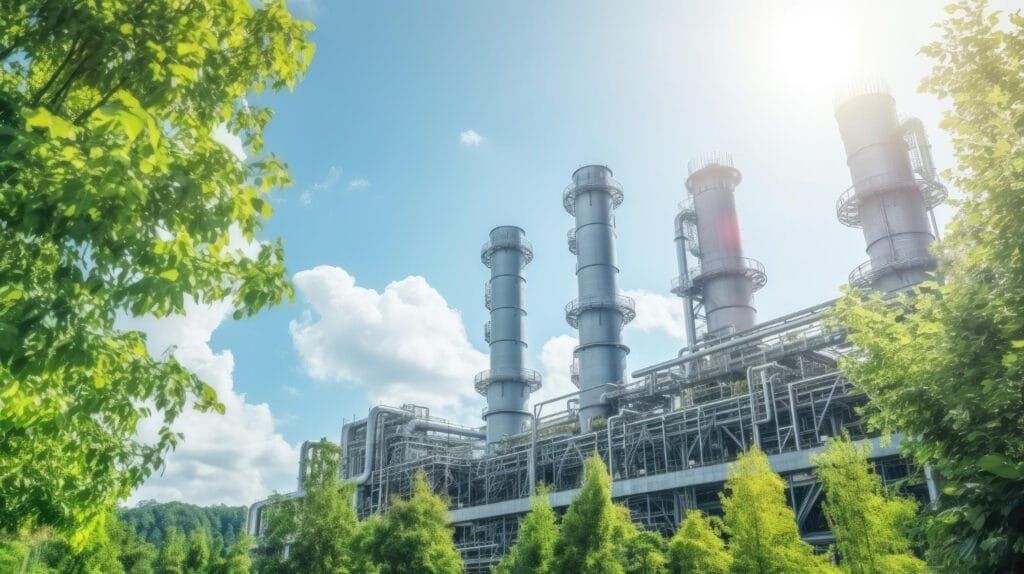In the pursuit of industrial efficiency and productivity, it’s essential to recognize the often-overlooked connection between regular plant maintenance, scheduled downtime, and positive environmental impact. This article delves into the multifaceted environmental benefits that stem from a proactive approach to plant maintenance and the strategic scheduling of downtime. From energy conservation to emissions reduction, the integration of sustainable practices into industrial operations not only contributes to environmental stewardship but also aligns with the global push towards a greener future.
Energy Efficiency Through Optimal Equipment Performance:
One of the primary environmental benefits of regular plant maintenance is the improvement of energy efficiency. Industrial plants rely heavily on a multitude of machinery and equipment, all of which require regular inspection, cleaning, and calibration to ensure optimal performance. When these assets are well-maintained, they operate more efficiently, requiring less energy to produce the same output.
Regular maintenance addresses issues such as friction, misalignments, and worn-out components that can lead to increased energy consumption. By minimizing these inefficiencies, industrial plants can significantly reduce their overall energy consumption, contributing to a lowered carbon footprint and decreased reliance on fossil fuels. This, in turn, aligns with global initiatives to mitigate climate change and promote sustainable energy practices.
Emission Reduction and Air Quality Improvement:
Scheduled downtime provides an opportune moment for thorough inspections and upgrades to emission control systems. Many industrial processes produce pollutants and greenhouse gases, contributing to air pollution and climate change. By incorporating regular plant maintenance and downtime, companies can implement and optimize emission control technologies, ensuring compliance with environmental regulations and reducing the release of harmful substances into the atmosphere.
Proactive maintenance helps identify and address potential sources of emissions, such as leaks or faulty combustion processes. Implementing upgrades during scheduled downtime, such as installing more efficient filters or adopting cleaner technologies, further contributes to emission reduction. As a result, the surrounding air quality improves, benefiting both the local environment and the health of nearby communities.
Resource Conservation and Waste Reduction:
Regular plant maintenance involves not only the optimization of equipment but also the efficient use of resources. Properly maintained machinery tends to use resources more judiciously, whether it be raw materials, water, or energy. Additionally, scheduled downtime allows for the inspection and repair of any leaks or inefficiencies in production processes, minimizing resource wastage.
Moreover, planned downtime facilitates the implementation of waste reduction strategies. By identifying and addressing inefficiencies in production lines, companies can optimize processes to generate less waste. This reduction in waste not only lessens the environmental impact but can also lead to cost savings for the company through more efficient resource utilization.
Biodiversity Preservation through Environmental Stewardship:
Industrial activities can have significant impacts on local ecosystems, from habitat destruction to water pollution. Regular plant maintenance, coupled with scheduled downtime, presents an opportunity for companies to adopt environmentally responsible practices that contribute to biodiversity preservation.
For instance, companies situated near water bodies can use downtime to inspect and upgrade wastewater treatment systems, preventing the discharge of harmful pollutants into aquatic environments. Additionally, maintenance activities can include the implementation of eco-friendly landscaping practices, such as creating green spaces or using native vegetation, promoting biodiversity around the industrial site.
Extended Equipment Lifespan and Reduced Manufacturing Footprint:
Regular maintenance, when conducted systematically, extends the lifespan of industrial equipment. Well-maintained machinery is less prone to breakdowns and premature failures, reducing the need for frequent replacements. This, in turn, contributes to a reduction in the overall manufacturing footprint associated with the production, transportation, and disposal of new equipment.
By maximizing the lifespan of existing machinery through preventative maintenance, companies can lessen the environmental impact of manufacturing processes. This aligns with the principles of a circular economy, where resources are used more sustainably, and the lifespan of products and equipment is extended through efficient maintenance and responsible management.
Compliance with Environmental Regulations:
Stringent environmental regulations govern industrial operations, and compliance is non-negotiable. Regular plant maintenance, including scheduled downtime, offers companies the opportunity to ensure that their facilities adhere to these regulations. This proactive approach not only avoids legal penalties but also demonstrates a commitment to environmental responsibility.
Scheduled downtime acts as a strategic window for companies to assess their operations comprehensively. This includes evaluating existing environmental management systems, updating procedures to meet new regulatory requirements, and implementing any necessary technological upgrades to align with evolving standards. By staying ahead of regulatory changes, companies position themselves as responsible stewards of the environment.
Conclusion:
In conclusion, the environmental benefits of regular plant maintenance and scheduled downtime extend far beyond the immediate operational improvements. From energy efficiency and emission reduction to resource conservation and biodiversity preservation, the integration of sustainable practices into industrial operations plays a pivotal role in environmental stewardship. As industries worldwide face increasing pressure to embrace greener practices, the strategic alignment of maintenance activities with environmental goals becomes essential. By recognizing the interconnectedness of operational efficiency and ecological well-being, companies can pave the way for a more sustainable and environmentally conscious industrial landscape.





